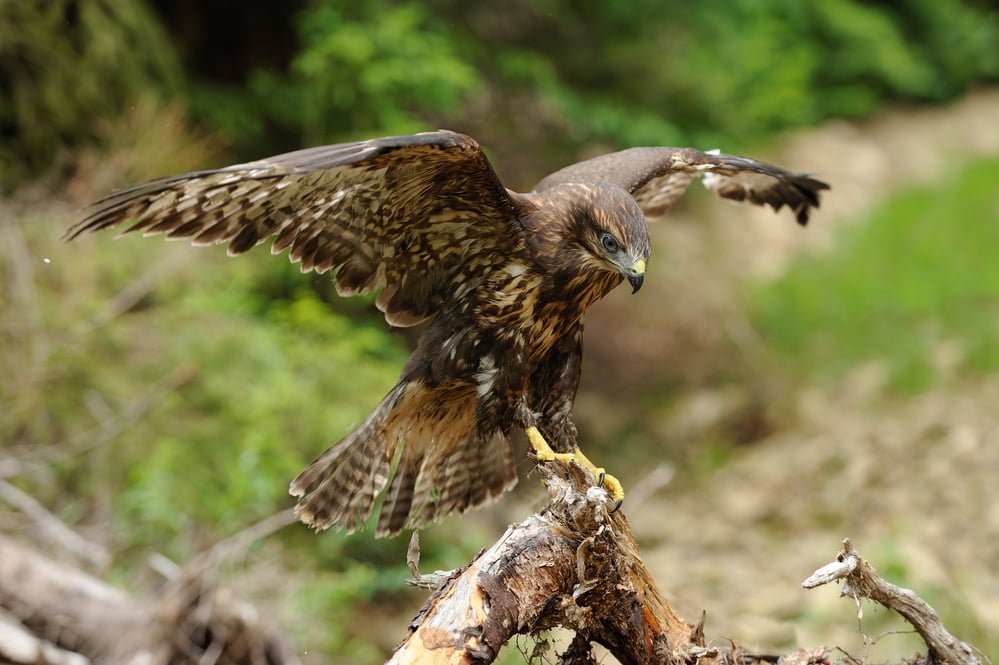Introduction to Hawk Calls
Hawk calls are distinct vocalizations made by various species of hawks, which serve as a crucial aspect of their communication within the animal kingdom. These calls can range from sharp, piercing sounds to melodious whistles, each serving a specific purpose in the context of the hawk’s behavior and environment. Understanding the significance of hawk calls meaning is essential for birdwatchers, wildlife enthusiasts, and researchers alike, as it provides insight into hawk interactions and their social dynamics.
In nature, hawks use vocalizations for a range of reasons. They may call out to establish territory, signal the presence of a mate, or warn others of potential threats. Their calls can be heard during various activities such as hunting, nesting, or while in flight. The timing and frequency of these calls can reveal much about the hawk’s emotional state and environmental conditions. For instance, incoming hawk calls often indicate that a male is defending his territory against competitors, while softer, more subdued sounds may express courtship behavior.
Several hawk species inhabit diverse environments, from woodlands and grasslands to urban landscapes. Common examples include the Red-tailed Hawk, Sharp-shinned Hawk, and Cooper’s Hawk, each with unique calls adapted to their habitats. Recognizing these calls can enhance one’s ability to observe hawks in the wild, aligning auditory clues with visual sightings. By interpreting these sounds, individuals can gain a clearer perspective of hawk behavior and their role in the ecosystem. The exploration of hawk calls meaning offers a doorway into understanding the rich tapestry of wildlife interactions and conservation efforts. Understanding these calls adds depth to our appreciation of these magnificent birds and underscores their vital role in maintaining ecological balance.
Different Types of Hawk Calls
Hawk calls are a crucial aspect of the communication repertoire of various species within the Accipitridae family, each characterized by unique sound patterns that serve specific functions. Among the most recognized hawk species is the Red-tailed Hawk, known for its distinctive, raspy scream often described as “kee-eee-arr.” This call is frequently employed during mating season and territorial displays, functioning as an assertion of dominance while also attracting potential partners.
Another prominent species, the Cooper’s Hawk, possesses a call that is markedly different. Their vocalization is a rapid series of sharp, short notes, typically resembling a “kak-kak-kak” sound. This urgent call is often associated with alarm, particularly when the hawk feels threatened or is protecting its nest. The high pitch and rapid sequence of the call indicate an immediate need for vigilance, alerting other birds in the vicinity to potential danger.
In contrast, the Broad-winged Hawk offers a completely different auditory experience. Their calls are softer, often resembling a series of plaintive whistles. These sounds are more common during migration, serving to keep the flock together as they travel long distances. The gentle, melodious tones represent a form of communication that fosters unity among the group, highlighting the social aspect of their migration.
It’s essential to understand that hawk calls meaning can vary significantly depending on context. For instance, calls may change under duress, in a breeding context, or during interactions with other species. The various pitches, frequencies, and patterns of these calls can indicate not just the presence of a hawk but also convey a wealth of information about their emotional state and environmental challenges. Recognizing these differences enables birdwatchers and enthusiasts to appreciate the intricacies of hawk communication more profoundly.

Interpreting Hawk Calls in the Wild
Understanding hawk calls meaning is crucial for wildlife enthusiasts and bird watchers who wish to enrich their outdoor experiences. Hawks, known for their keen eyesight and impressive hunting skills, also communicate through an array of vocalizations that can provide insights into their behavior and environmental interactions. Learning to interpret these calls can significantly enhance one’s ability to observe and appreciate these magnificent birds in their natural habitats.
First, it is vital to recognize that different species of hawks produce distinctive calls. For instance, the red-tailed hawk is known for its iconic, harsh scream, while the Cooper’s hawk emits a series of rapid “cak-cak-cak” sounds. Wildlife enthusiasts should familiarize themselves with these various calls, as understanding hawk calls meaning requires knowledge of the specific hawk species present in the area.
To effectively identify and interpret hawk vocalizations, utilizing bird call apps or field guides can be beneficial. These resources often provide audio samples that allow users to hear the calls before heading out into the field. This preparation can significantly improve one’s ability to distinguish between similar-sounding calls, thereby enhancing the viewing experience.
In addition to auditory recognition, observing hawks’ behavior can offer context to their calls. For example, hawks may call out when they feel threatened, when establishing territory, or during mating displays. By paying attention to the circumstances under which calls are made, observers can better understand the nuances of hawk calls meaning. Furthermore, note-taking during bird watching sessions can help track patterns in vocalizations and behaviors over time.
By combining the knowledge of hawk calls with practical field strategies, enthusiasts can cultivate a deeper connection with these aerial predators, enriching their understanding and appreciation of the natural world.
The Role of Hawk Calls in Ecosystem Dynamics
Hawk calls serve as a critical auditory signal in the intricate web of ecosystem dynamics. These remarkable vocalizations not only reflect the health and status of these raptors but also have significant implications for various wildlife behaviors and interactions. By understanding hawk calls meaning, we can appreciate their influence on both predator-prey relationships and territorial claims within their habitats.
One of the primary roles of hawk calls is in the establishment of territory. These calls communicate to potential competitors and other species that a hawk has laid claim to a specific area. This territorial assertion is essential for ensuring that hawks have access to the necessary resources for survival, including hunting grounds. In this context, hawk calls act as a deterrent to other predators, helping to maintain the balance within the food chain.
In addition to their role in territorial behavior, hawk calls can impact the behavior of prey species. Prey animals often have evolved responses to the distinct sounds made by hawks. For instance, the calls can induce alarm behaviors among smaller animals, prompting them to seek shelter or remain vigilant for threats. This interplay not only highlights the predator-prey dynamics reflective of hawk calls meaning but also underscores the importance of these calls in maintaining the overall health and stability of ecosystems.
Furthermore, the absence of hawk calls in an area may indicate environmental disturbances, such as habitat loss or pollution, which can lead to shifts in wildlife populations. Consequently, acute awareness of the acoustic signatures of these majestic birds can serve as valuable indicators for conservation efforts. By recognizing the pivotal role that hawk calls play in ecosystem dynamics, we foster a deeper appreciation for their presence and the greater interconnectedness of all species within their environment.


